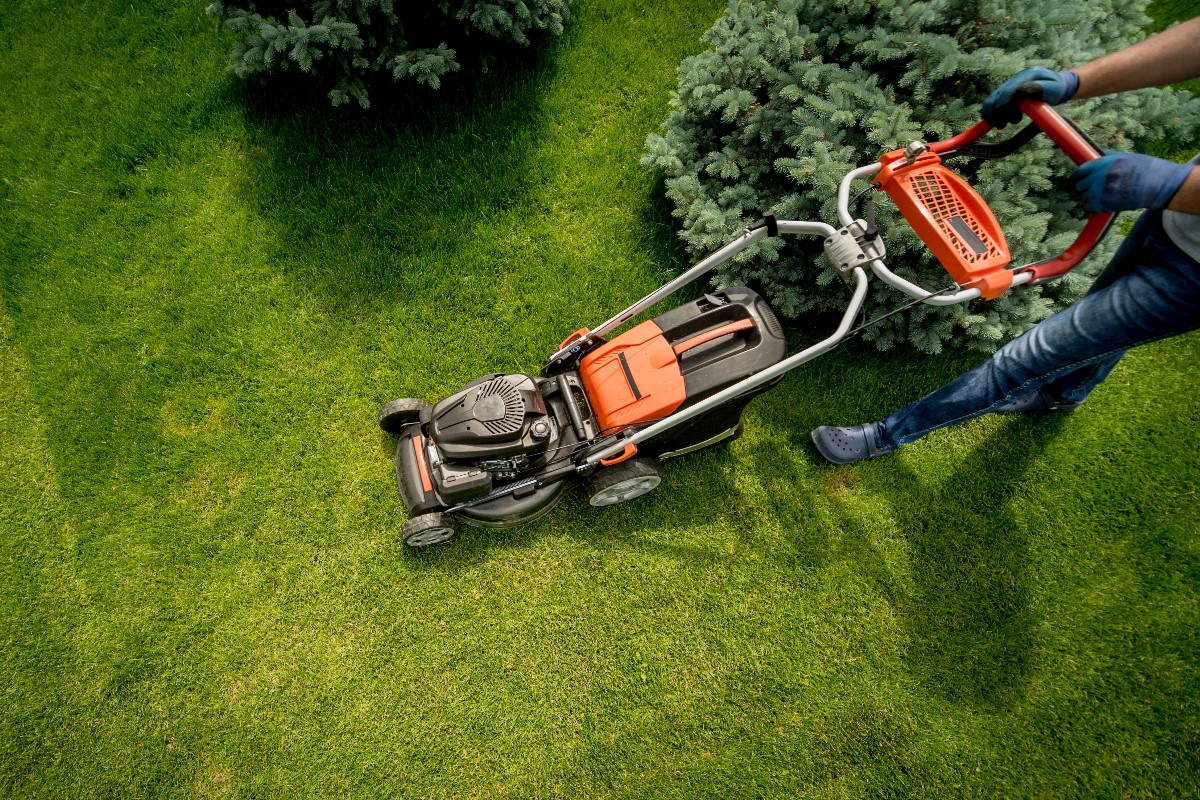
A dense and beautiful lawn requires work and commitment. You don’t just have to fertilize it; you also have to mow it properly. How do you do this so that your lawn always looks its best?
Mowing the lawn properly in autumn is essential to ensure that frost does not have a negative effect on your lawn. Cutting the grass too short will cause it to freeze, and leaving the grass too long will cause it to rot and breed various pathogens and fungi. The last mowing of your lawn should be done in mid-October – this will allow the grass to cope with the coming winter.
If the autumn is warm and there are no frosts, the last mowing of the lawn can even take place at the beginning of November. The optimum grass height for winter is around 4 cm. The lawn does not grow as quickly in the autumn, so the grass should not grow before winter sets in. It is best to cut the grass short for the winter – that way it will bounce back more quickly in the spring and you will have a beautiful, green lawn.
Mowing is not the only treatment for your grass before winter. The grass should also be fertilized properly. Although grasses are hardy in Poland, some species are susceptible to frost. Grasses are always susceptible to soil moisture and are badly affected by spring melt. Therefore, apply the right fertilizers before winter to help them survive these winter months.
The grass should be fertilized with special winter and autumn fertilizers before winter – these are compound fertilizers which contain a lot of phosphorus and potassium. Winter fertilizers very often have minerals which are released in the spring – so that grass growth in the spring is accelerated and the grass thickens more quickly.
In order to keep the lawn looking beautiful, all the leaves which fall from the trees should be collected. When the leaves start to rot, it creates the perfect environment for pathogens and fungi. Thus, the lawn will look worse in the spring.
The first mowing in spring is very important for the condition of the lawn – it makes it lush and thick. This mowing determines how your lawn will look in spring and how quickly it will grow back. The first mowing depends on many factors:
Very often the grass is yellow after the winter, i.e. it has been attacked by snow mold. When this is the case, cut the grass very low. The first spring mowing should be done on the lowest setting of the mower. Grass grows back quickly – the lower you cut the grass, the bushier and denser it will grow back.
When to mow for the first time in spring depends on the weather and how lush the grass is. The first mowing can be done as early as March
You should scarify your lawn in early spring. This strengthens the grass and gets rid of moss. If you have a small lawn, you can scarify by raking intensively. This treatment causes the grass to become denser.
It aerates the lawn and improves the soil structure. It should be carried out after scarifying. It stimulates the grass to grow more vigorously – grass grows better in aerated soil. Aeration involves pricking the lawn to a depth of 10 cm. This can be done with a machine or a pitchfork.
Sandblasting is the last treatment in spring. Spreading sand on the grass contributes to more intensive grass growth. Sand also improves the permeability of the soil.
If you want your lawn to look beautiful, you should mow it once a week. Only mowing the grass this often will keep it looking attractive. If you don’t want your lawn to look perfect, you can mow it less often but make sure that the grass is no more than 8 cm high.
The taller the grass, the less it tolerates radical changes in height. Gardeners recommend that you cut the grass by no more than 1/3 of its height.
The frequency of mowing depends on:
Proper lawn care is not difficult, but it does take commitment.